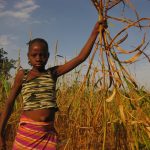In recent years, various coups have shaken Sahelian Africa, particularly the west-central Sahel. Coups in Mali in 2020 and 2021, in Burkina Faso in January 2022 and September 2022, and in Niger in 2023 have had and will have security consequences for governments, international organizations, NGOs and businesses. Following the respective coups in Mali and Burkina Faso, it is undeniable that the security situation in both countries has continued to worsen. In Mali, the government and the private Russian military company Wagner are fighting Tuareg separatist groups in the north, as well as terrorist groups such as Jama’at Nusrat al-Islam wal-Muslimin (JNIM) in central Mali and the Islamic State in the Greater Sahara ( ISGS) in the east. Research by London Politic indicates that the government is unlikely to be able to regain and hold large swaths of territory in the north, center or east of the country in the short to medium term. In Burkina Faso, the JNIM and ISGS terrorist groups have continued to intensify attacks and now have a significant presence in all regions except Centre-Ouest, Centre-South, Center (Ouagadougou, the capital) and Plateau-Central. While there has not been a large-scale terrorist attack in the capital since 2018, we assess that, in the absence of significant foreign security assistance and/or a comprehensive counter-terrorism strategy, it is likely that JNIM will carry out an attack in Ouagadougou by the next year. In Niger, ISGS activity significantly increased in the two months following the coup. Terrorist activity is mainly concentrated in the southwest of the country, and attacks have become bolder, more frequent and occurring closer to the capital, Niamey, since the coup. JNIM’s tentacles have also spread to Benin, Ivory Coast, Togo and Ghana over the past year, where terrorists have carried out attacks and others have been identified and arrested by local authorities.
Evils According to the Armed Conflict Location & Event Data Project (ACLED), Mali has recorded a 38% increase in political violence compared to last year, almost all of which can be attributed to terrorist groups (mainly JNIM but also ISGS), the Forces Armées Maliennes (FAMa) and the private Russian military group Wagner. JNIM carried out attacks and, together with the Cadre Stratégique Permanent (CSP), an informal consortium of Tuareg separatist groups, took territory in the center and north of the country, including several military bases. JNIM currently maintains a blockade around Timbuktu, the most populous city in the north of the country, preventing goods from entering and exiting the city. In September, JNIM and FAMa had a major battle in the Timbuktu region, leaving around 60 people dead. JNIM controls a significant part of the territory in central Mali and has recently carried out repeated attacks in the area of Mopti and Segou, the latter about 230 km from Bamako. JNIM and ISGS have also recently wreaked havoc in the east of the country, in the Gao area, from which ISGS has expanded into southwestern Niger. Given that there is very little evidence of clashes between JNIM, ISGS and CSP, it is reasonable to assume that the groups are, at least, collaborating with each other. Dragonfly Intelligence predicts that the Malian government is very likely to “lose control of large parts of their territory” in the coming months. Additionally, London Politic has spotted a Tunisian Air Force plane making recurring trips from Bamako to an unknown destination in the north of the country over the past week. This could indicate that Tunisia is offering, or planning to offer, some type of military assistance.
Latest developments When referring to FAMa announcements, we put the word “terrorists” in parentheses because FAMa refers to both the CSP and JNIM and ISGS as terrorists. September 27 – JNIM announces via their Al-Zallaqa media channel that they attacked FAMa in Acharane, a village 35 km west of Timbuktu, displaying a large cache of military equipment and trucks requisitioned by FAMa. FAMa announced that it had successfully repelled the attack, and a local source published a video of the encounter that we were unable to verify. 28 September – FAMa announces that “terrorists” have attacked a military camp in Dioura, central Mali. They reported repelling the attack, killing around 50 militants. A CSP spokesperson told Africanews that he had captured the camp. October 1 – FAMa reports that there was a violent battle between them and “terrorists” in Bamba, just under 200 km east of Timbuktu. A video (WARNING – SENSITIVE CONTENT) published by an independent journalist purports to show CSP fighters celebrating the capture of the camp. October 2 – A FAMa convoy departed Gao heading north towards Tessalit, Aguelhok and Kidal, which are CSP strongholds. A Tuareg news agency reported that the convoy split into three smaller convoys, one heading north, another east and one towards Enviv in the far north. 3 and 4 October – FAMa reports an attack on their convoys in Almoustrat, northern Mali, and Nampala, central Mali, on 3 October, and an attack on a dam in Taoussa, northern Mali, on 4 October. Furthermore, a CSP spokesperson told Reuters that they seized the FAMa military camp in Taoussa, about 250 km east of Timbuktu, on 4 October. 5 October – FAMa says in a statement that the “terrorists” have failed to stop their advance north, 10 km south of Anefis, in northern Mali. October 6 – CSP militants release a video claiming that the army has made no progress towards Enviv. On the same day, FAMa announced that it had repelled an attack on Nyiminyama in central Mali. October 7 – CSP claims to be bombarded by FAMa attacks while trying to surround Enviv, northern Mali. October 7 and 9 – a CSP commander (WARNING – SENSITIVE CONTENT) and a local journalist say that FAMa and Wagner have committed persistent atrocities over the past week in their offensive into the north of the country. While we cannot verify the video, these atrocities are in line with previous acts committed recently by FAMa and Wagner in other parts of Mali.
Operational forecast Given the apparent inability of FAMa and Wagner to maintain control of territory in the center of the country, even as they undertake offensives to the north, and the persistent increase in terrorist attacks in the area, we believe it is likely that terrorist groups will continue to carry out persistent attacks in the Central Mali mostly undisturbed, and that these groups are likely to continue to slowly expand southwestward toward Bamako. Terrorist groups are likely to remain prominent in Mali in the long term – a declining economy offering little opportunity, as well as the need for protection due to atrocities perpetrated by all sides, will most likely lead to more people joining armed groups. It is very unlikely that flights to and from Timbuktu will resume in the next 3 months, and unlikely that we will see an increase in flights to and from Gao in the next 3 months. Gao Airport currently hosts approximately 2-4 flights to and from Bamako per week. Gold mines in southwestern Mali are very unlikely to be affected by conflict in the next 6 months, but the further expansion of armed groups may complicate supply chains and increase costs for mining companies. Bamako is likely to remain generally stable over the next 3 months, but there is a reasonable possibility that JNIM could attempt to carry out a large-scale attack there in the near future. In the next 6 months to a year, there is a reasonable possibility that JNIM will try to take Bamako. The above image represents all identified incidents of political violence (blue) and protests (orange) that occurred in Mali in September. Source: ACLED
Niger According to ACLED, there was a 42% increase in political violence in Niger (of which only a portion was terrorist violence) in the month following the July coup, accompanied by a 300% increase in terrorist activity ISGS. Despite the recent increase, Niger continues to experience low levels of terrorism-related violence compared to Mali and Burkina Faso. Most terrorist violence in Niger occurs in the south-west of the country, concentrated mainly in the Tillabéri region, relatively close to the capital, Niamey. Due to the region’s proximity to terrorist-occupied areas of Mali and Burkina Faso, it is subject to possible repercussions. This complicates matters for Niger, as the attacks that occur are mostly closer to densely populated areas compared to Mali. After the coup, a pro-ISGS television channel stated that it would “create favorable conditions for militants”, indicating that the groups may be emboldened by the coup and the subsequent departure of French troops. However, some analysts, including Fahiraman Rodrigue Koné, head of the Sahel project at the Institute for Security Studies (ISS), conclude that the Forces Armées Nigeriennes (FAN) is better prepared to respond to insurgencies than Mali or Burkina Faso . Before the coup, Niger was renowned for its successful strategy in containing terrorism, which coupled security efforts with socioeconomic policies. The FAN is also facing low-level insurgencies from Boko Haram and Islamic State of West Africa (ISWS) in the country’s desolate southeast. Levels of violence in the south-east have fallen sharply over the past month.
Recent developments 28 September – A local news source reports that terrorists (most likely ISGS) killed at least 10 FAN soldiers in Kandadji, Tillabéri (190 km northwest of Niamey); other sources speak of up to 22 deaths. October 1 – Local news sources say ISGS ambushed FAN 4 km north of the Malian border, killing 33 people. October 3 – Niger’s Ministry of Defense announces that over 100 ISGS militants attacked FAN near the border with Mali, northwest of Tabatol, killing 29 people. October 5 – General Mohamed Toumba of the FAN states in a press conference that “terrorists are more armed than our soldiers, they have weapons that our states do not possess and they also have money”. 8 October – FAN announces that terrorists attacked Bégorou Tondo, Tera department (about 190 km north-west of Niamey) on 7 October, killing 7 civilians. October 8 – A Nigerian news source announces that terrorists attacked the Banibangou police station on the night of October 7, about 250 km north of Niamey. October 8 – A Nigerian news source announces an attack in Bibiyergou, about 115 km northwest of Niamey, which left 3 civilians dead.
Operational forecast It is likely that ISGS will continue to carry out persistent attacks and further consolidate territory in southwestern Niger, particularly in the departments of Tillabéry and Tera. Intelligence gaps created by the recent departure of the French and an underutilized FAN will make it difficult to address the growing terrorist threat. Barring the implementation of mitigating factors, such as a holistic plan to address terrorism or security/intelligence agreements with foreign partners (the latter seems unlikely post-coup), ISGS is likely to pose a threat to Niamey over the next 6 months. The FAN is likely to remain under the control of Niamey for the next 6 months, but ISGS is likely to try to attack Niamey in the same period. Flights to and from Niamey are not expected to be significantly affected by terrorist violence over the next 3 months. Terrorist groups in southeast Niger are very unlikely to pose a significant threat to the Nigerien government or large population centers in the next 6 months. Uranium mines in northern Niger, near the town of Arlit, owned largely by the Orano Group, a French company, are most likely free from terrorist violence in the next 6 months; however, supply chain complications due to increased violence in the South could increase costs for companies. The Orano Group could also face local reputational challenges and security threats resulting from ties to the French government. Gold mining projects in the country’s southwest, including the Samira Hill gold mine in Tera, are likely to be directly impacted by terrorist violence over the next 6 months. Terrorist groups could directly target mines to aid their illicit mining operations. The image above depicts all identified incidents of political violence (blue) and protests (orange) that occurred in western Niger in September.
Burkina Faso Over the past year, levels of violence in Burkina Faso have been drastically higher than in Mali and Niger. According to Omar Alieu Touray, president of ECOWAS, Burkina Faso recorded 2,725 attacks in the first half of 2023, compared to 844 in Mali and 77 in Niger. The Burkinabé government now controls less than 40% of the country’s territory; the remaining 60% is ungoverned or under the control of JNIM. Dragonfly Intelligence believes that – similar to the situation in Mali – the Forces Armées du Burkina Faso (FABF) is likely to lose further territory to JNIM. Dragonfly also highlights the alleged disorganization of the FABF and JNIM’s desire to take over the capital, Ouagadougou.
Since Touray’s statement in July, ACLED data confirms that attacks have continued at a fast pace across much of the country. JNIM now carries out frequent attacks in all regions except four regions surrounding the capital, Ouagadougou. Attacks were previously more frequent in the north and east, but have also become more frequent in the south-west of the country, near the border with Ivory Coast, where there was a sharp increase in attacks in August. According to the ISS, terrorists use illicit markets in northern Côte d’Ivoire to finance their efforts in Burkina Faso and elsewhere. Based on reports from Burkinabé news source RTB, the FABF carries out daily aerial bombardments against JNIM. In their campaign to free Burkina Faso from JNIM, human rights groups have accused the FABF of serious and persistent human rights abuses. The abuses are likely to continue to push more people towards extremist groups. As Ibrahim Traoré, president of Burkina Faso, faces a difficult battle against jihadists, it seems likely that he will seek outside help; However, given his country’s international isolation, his only option may be the Wagner group
Recent developments September 15 – JNIM announces via their Al-Zallaqa media channel that they attacked the FABF in Bassum, Kaya state (about 100 km northeast of Ouagadougou), killing 10 people, and that they carried out an attack in Benin, killing 3 people. September 15 – JNIM announces that it ambushed the FABF in Yimberella and Korqirla, Houet province, western Burkina Faso, killing at least 5 people. September 24 – JNIM announces that it has assaulted the FABF in Boungou, Gourma, eastern Burkina Faso. September 27 – JNIM announces killing 2 soldiers in Titu. September 28 – JNIM announces that it has assaulted the FABF in Diaradougou, Houet province. 8 October – The Burkinabé news agency RTB announces that the FABF struck terrorists who had attacked civilians in Biba and To, Nayala province, in north-west Burkina Faso.
Operational forecast It is unlikely that, even with assistance from Wagner, the FABF can effectively contain JNIM attacks on most Burkinabé territory over the next 6 months, and it is unlikely that the FABF can recapture significant territory from JNIM in the same period. JNIM is likely to carry out attacks in ever closer proximity to Ouagadougou, in the Centre-Ouest and Plateau Central regions, and is likely to attempt to carry out an attack on Ouagadougou in the next 6 months. Although Ouagadougou is likely to remain generally stable over the next 3 months, there is a reasonable possibility that JNIM could take over Ouagadougou within the next year. Flights to and from Ouagadougou are not expected to be significantly affected by conflict over the next 3 months. As in the case of Mali, it is very likely that human rights violations, lack of economic opportunities and the need for protection will continue to push people to join armed groups in the coming year. Nordgold, a Russian mining company, is very likely to continue to face prolonged challenges to its mining operations at the Bissa, Bouly, Taparko and Yimiougou mines, as well as severe supply chain challenges. The image above depicts all identified incidents of political violence (blue) and protests (orange) that occurred in Burkina Faso in September. Source: ACLED


